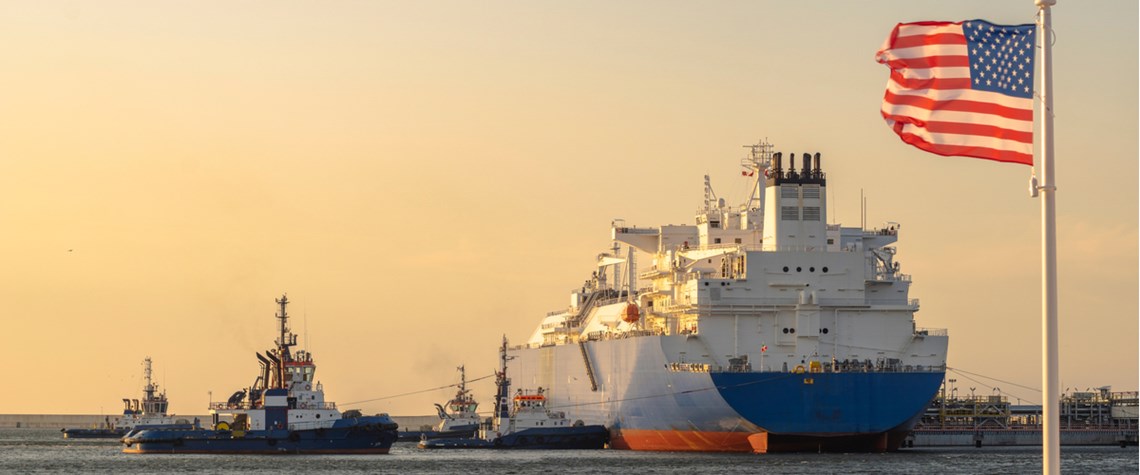“The Gulf of Mexico model was a great disruptor five years ago,” Sarah Bairstow, chief commercial officer of LNG project developer Mexico Pacific Limited, told Petroleum Economist’s LNG to Power Apac virtual forum in late October. “It remains a great proposition but, unfortunately, it is not as economic once you get that LNG into Asia.
“Gulf Coast projects will depend on how much of the Atlantic market they can capture. The economics [of delivering into Asia-Pacific] could then still make sense, if only as a diversification play. But you will not see a lot of contracts into the Pacific market being signed with Gulf of Mexico players,” she predicts.
West coast advantage
Perhaps unsurprisingly, given that Mexico Pacific is developing a terminal on the west coast of North America, Bairstow sees that region as able to compete with Qatar as a supplier of choice into Asia-Pacific. “The Qataris have a lot of volume to sell and they have a great market position. But buyers want diversification,” she says.
“And we are able to match Qatari pricing by bringing the gas over to the west coast— it reduces shipping, and you can draw off a cheaper basin. I think we will see quite an emergence of projects on west coast North America.”
Xi Nan, vice-president, gas and power markets at consultancy Rystad, agrees the economics of US Gulf Coast supply will struggle against Qatar in securing long-term contract volumes. The planned new Qatari trains have the lowest breakeven price for delivery into Asia, in a $4-4.50/mn Btu range, Xi says.
But the US Gulf Coast has a breakeven cost of $7/mn Btu due to its much longer distance from Asia and its upstream gas being sourced from the grid. On the other hand, in Xi’s view, if a US Gulf Coast project can get up and running, it can be competitive on incremental spot deliveries into Asia at much lower prices. And US term contracts are de-linked from oil and have flexibility that will attract Asian buyers, especially in South and Southeast Asia.
Keen competition
Given that 71mn t/yr of new liquefaction capacity is due online in the coming years from FIDs taken in the second half of the 2010s, competition for supply contracts to underpin new projects “is going to be very stiff—it will be a buyer’s market”, according to Sanjeev Gupta, Asia-Pacific oil and gas leader at financial services firm EY. FIDs in the US, Canada, Russia, Qatar and Australia have already been delayed to 2021 or even 2022 or 2023, agrees Xi, who predicts investment in LNG in 2020 will shrink to just $3bn.
But the market will rebalance by the middle of the decade, warns Bairstow, and LNG projects take four-to-five years to build. She expects to see several new supply facilities sanctioned over next 12-18 months.
And Bairstow says the Asia-Pacific buyers who will agree the contracts that allow these winners to move to FID will have three priorities—certainty of supply is one, given most countries in the region are reliant on imports for national energy security; flexibility is another, with this year’s demand fluctuations amid unforeseen events reinforcing to buyers that flexibility is key.
“If a producer cannot offer destination flexibility in its entirety, buyers are putting a price penalty on those cargoes or that term offer,” she continues. “But, ultimately, it all comes down to price.”
The other curveball is that it is not just new supply competing for Asia-Pacific demand. Some 70mn t/yr of supply contracts in the region are going to expire by 2030, according to Bairstow’s calculations.
These existing facilities “are looking to remarket and recontract, but the market has changed since initial contracts were signed at 14-15pc of Brent or JCC”, she warns. For long-term contracts, the market is currently looking at sub-11pc Brent.
Older plants are generally less efficient and more carbon-intensive than new plants that can benefit from a decade of innovation to bring down costs. And quite a few need new reserves to back the continuation of production, says Bairstow. On the other hand, they have likely fully amortised all their capex, giving them one significant edge over greenfield sites.
Petroleum Economist's first virtual LNG to Power Forum took place last week with a focus on the opportunities and challenges across APAC. This virtual event included eight hours of high-quality content, with a focus on engaging and interactive live panel discussions. All content is now available on demand. Click here to view.
LNG to Power Forum EMEA took place in November 2020, you can view the content here. The final event in the 2020 series focused on North America, and is available to view here.








Comments